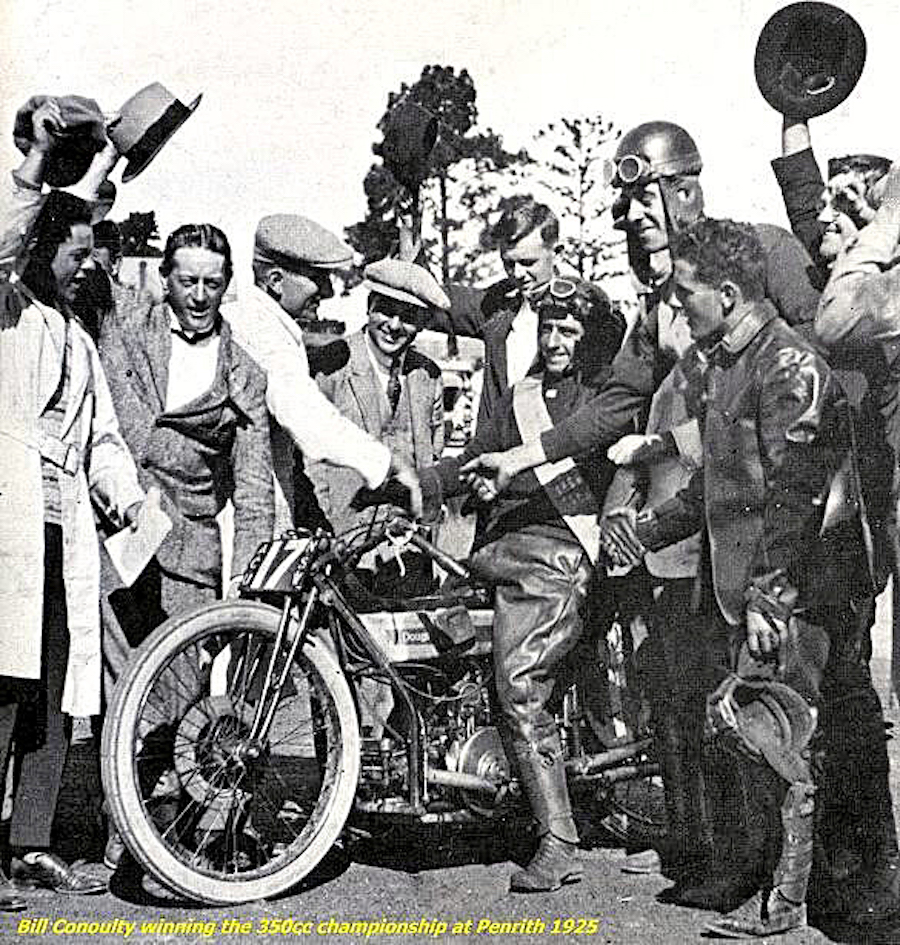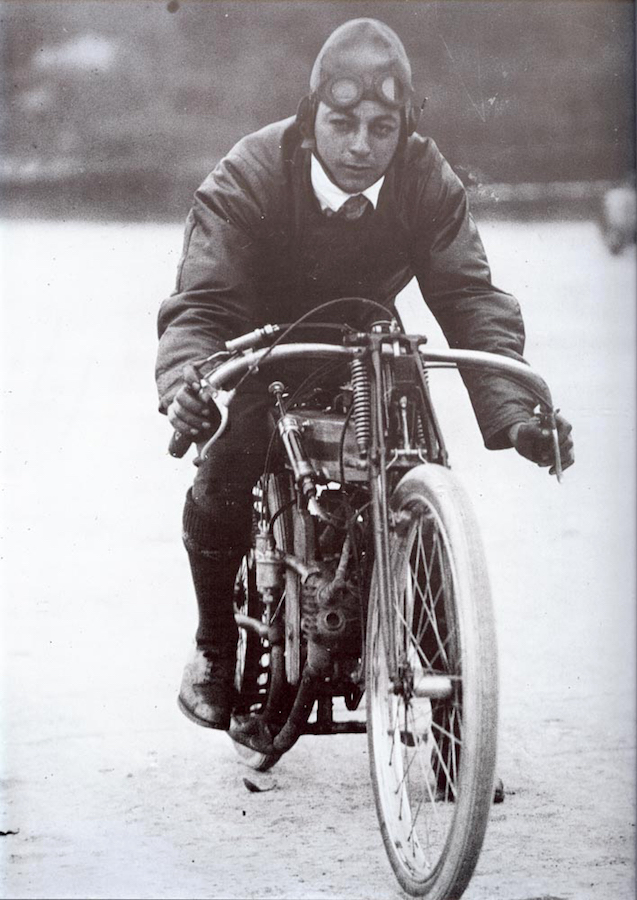Check the name Stephen Leslie Bailey in the official Isle of Man archives and you’ll find two appearances – the first and the second for any Australian competitor. Check the same name at the British Patents Office and you’ll uncover scores of valuable patents under this enterprising Australian engineer’s name; including the first disc brake used on a motorcycle, the cross-over countershaft gearbox and the flywheel clutch. For a bloke who believed only a horizontally opposed engine could achieve perfect balance, Bailey and the Douglas twin were made for each other.
Self-educated, highly skilled and an exceptionally productive inventor, ‘Les’ was never backward in coming forward, claiming the honour of introducing the first powerful high-rpm engines to the public. Yet he never became precious about where an idea originated and, while working at Douglas, he was the first to comprehend ‘Flying Freddie’ Dixon’s concept of a banking sidecar. Then, over several frantic days, Les engineered the reality from plans sketched on the workshop floor; allowing Freddie and his passenger Walter Denny to win the inaugural Isle of Man Sidecar TT in 1923.
Though better known in the UK for his expert development and testing abilities, Les was no stranger to motorcycle racing. As lead rider for the 1912 Douglas Factory Team he was odds-on favourite to lead a clean sweep in the Junior TT. Les sprinted away on the first lap of the Junior TT before a stripped gearbox cog terminated his efforts as his teammates took first, second and fourth placings. Led by Harry Bashall, Les fared little better in the Senior TT, where time spent repairing a broken chain relegated him to mid-pack; not ideal for a bloke who had dominated his ‘home’ track at Brooklands ever since his arrival in the UK.
An undisputed star of the Sydney Sportsground Speedway when he left Australia in 1910, back-to-back wins at the Aston Villa circuit disabused the English riders that Australians were not competitive. “Up ’till then they’d hardly taken me seriously,” recalled Les. By then Les had also won the French Grand Prix Junior TT at Le Mans on his 350cc Douglas, thus fulfilling the talent he’d demonstrated back in Australia by becoming the first colonial to win any major Continental event.
When he married Cissie Pullin – younger sister of fellow racer and prolific inventor Cyril Pullin – Les returned to Australia in 1913 with yet another Brooklands regular, Percy ‘Buck’ Weatherilt, and three factory prepared two-and-three-quarter horsepower Douglas racers; one of which Frank Meller rode to victory in the NSW Zenith Cup. Les also won the annual Victorian 50-mile Road Race before heading back to the UK to rejoin Douglas, just in time to oversee the annual production of over 1000 bikes a month for the duration of the Great War; an accomplishment which saw him promoted to General Manager of the entire Douglas operation.

Les resumed racing, however a serious accident in 1920 cut short his career, though not before an impressive performance in winning the Duke of York Medals. The injuries didn’t prevent Les from continuing his remarkable output of technical innovations. But when Willie Douglas Junior died and Les didn’t see eye to eye with a new Board of Directors, he returned home; the rift with management didn’t stop Les from being appointed as the Douglas representative Down Under.
Having served on the committee of both the Auto Cycle Union of Great Britain and the Royal Automobile Club, it was his honorary Life Membership of the Brooklands Racing Club that proved most valuable when Les returned home and was elected Chairman of the newly incorporated Penrith Speedway Limited.
Les faced no problems convincing the citizens of Penrith the scheme was a goer and raising 30,000 quid to totally rebuild the facility into what became known as the fastest mile flat track in the world, complete with a 2000-seat grandstand to accommodate spectators travelling by train from Sydney. Due to lack of capital (the equivalent of $4 million today), the venture almost folded but, demonstrating his considerable business skills, Les literally saved the day.
In between board meetings at the Missenden Road Motor Body Works – his principal business interest – Penrith Speedway Inc., the presidency of the Western Suburbs MCC plus the import of Coventry Chains and Amal Carburettors, Les found time to prepare a Douglas RA for speedway star Billy Conoulty to battle Tommy Benstead’s Harley-Davidson at both Penrith and the infamous Maroubra Speedway (where Les was also a director).
The Great Depression hit and Les scaled back his multifarious business interests to a single garage on Canterbury Road in Sydney’s inner west, though his interest in motorcycles never waned. He passed away in 1957 and he donated his remains to Sydney University.
Words Peter Whitaker
Photography Brian Darby & Independant Observations














